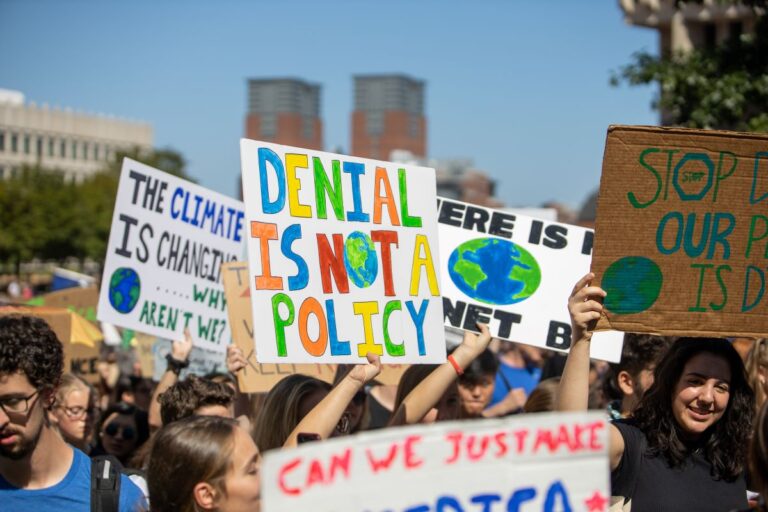Is California’s Environmental Effort Doing More Harm Than Good?
California is often hailed as a leader in the fight against climate change, but are the state’s ambitious policies causing more harm than good? Let’s delve into the impacts and unintended consequences of these climate initiatives.
1. Economic Strain on Low-Income Families

California’s aggressive climate policies have led to higher energy costs. For low-income families, this means a larger portion of their income is spent on utilities, exacerbating financial strain.
2. Job Losses in Traditional Industries

The shift towards renewable energy has resulted in significant job losses in traditional industries like oil and gas. Many workers are left struggling to find new employment opportunities in a rapidly changing job market.
3. Increased Housing Costs

Environmental regulations have contributed to skyrocketing housing costs. Stringent building codes and land-use restrictions have made it more expensive to develop housing, worsening the state’s affordability crisis.
4. Blackouts and Energy Reliability

California’s push for renewable energy has led to occasional blackouts. The state’s grid has struggled to keep up with demand during peak times, leaving residents without power during critical moments.
5. Agricultural Challenges

Strict water regulations aimed at conserving resources have hurt California’s agricultural sector. Farmers face reduced water allocations, which impacts crop yields and threatens the livelihoods of those in the farming community.
6. Limited Impact on Global Emissions

Despite California’s efforts, global emissions continue to rise. Critics argue that the state’s policies, while well-intentioned, have a negligible impact on the global scale and come at a high local cost.
7. Regulatory Burden on Small Businesses

Small businesses face heavy regulatory burdens under California’s climate policies. Compliance costs are high, making it difficult for small enterprises to thrive and compete.
8. Displacement of Residents

High living costs driven by environmental policies have forced many Californians to leave the state. This displacement has led to demographic shifts and community disruptions.
9. Inefficiency in Policy Implementation

Many of California’s climate initiatives suffer from inefficiency and poor implementation. Bureaucratic red tape slows progress and diminishes the effectiveness of these programs.
10. Transportation Challenges

Efforts to reduce car emissions have led to higher vehicle costs and increased public transportation prices. For many, this makes commuting more expensive and less accessible.
11. Unintended Environmental Consequences

Certain environmental policies have had unintended negative impacts, such as the increased use of electric vehicles leading to higher demand for lithium mining, which has its own environmental downsides.
12. Strain on State Resources

The financial burden of funding ambitious climate projects has strained state resources. Funds allocated to climate initiatives often divert money from other critical areas like education and healthcare.
13. Insufficient Renewable Energy Infrastructure

California’s renewable energy infrastructure is not yet robust enough to meet demand. This insufficiency leads to reliance on out-of-state fossil fuels during peak periods.
14. Inconsistent Policy Outcomes

The outcomes of climate policies are often inconsistent, with some measures failing to deliver the promised environmental benefits. This inconsistency undermines public trust and support.
15. Socioeconomic Disparities

Climate policies can exacerbate socioeconomic disparities. Wealthier residents can afford to adopt green technologies, while low-income families bear the brunt of higher costs without access to benefits.
16. Impact on Small Towns

Small towns and rural areas are disproportionately affected by environmental regulations. These communities often lack the resources to comply with new standards and face greater economic hardships as a result.
17. Decreased Industrial Competitiveness

Strict environmental regulations have made California less competitive for certain industries. Companies may relocate to states with more lenient policies, taking jobs and economic opportunities with them.
18. Technological Limitations

Current technology may not yet support the ambitious goals set by California’s climate policies. This gap between aspiration and capability creates challenges in achieving sustainable outcomes.
19. Overemphasis on Penalization

Many climate policies focus on penalizing bad behavior rather than incentivizing good practices. This punitive approach can create resentment and resistance among the public.
20. Insufficient Public Awareness

Despite extensive efforts, there remains insufficient public awareness about the complexities and challenges of climate policies. Greater education and engagement are needed to build widespread support and understanding.
Balancing Act

California’s fight against climate change is a balancing act with significant pros and cons. While the intentions are noble, the execution and outcomes often leave much to be desired. Are we ready to reassess and refine our approach to ensure that the benefits outweigh the harms?
Millennials Turn the Tide on Climate Beliefs

Millennials have often been labeled as apathetic, but when it comes to climate change, they are leading the charge. How did this generation go from skepticism to becoming fervent advocates for the planet? Millennials Turn the Tide on Climate Beliefs
Forgotten Warriors: 20 Military Units History Erased

Throughout American military history, numerous units have demonstrated extraordinary bravery and made significant sacrifices, yet many have not received the recognition they deserve. This article shines a light on these overlooked groups whose valiant efforts are an integral part of our nation’s heritage. Forgotten Warriors: 20 Military Units History Erased
Why You Shouldn’t Live in a Retirement Community

Think you’re ready to settle into a retirement community? Before making this significant life decision, consider how it might impact your independence, finances, and social life in ways you hadn’t anticipated. Why You Shouldn’t Live in a Retirement Community
Featured Image Credit: Shutterstock / Sundry Photography.
The content of this article is for informational purposes only and does not constitute or replace professional advice.
The images used are for illustrative purposes only and may not represent the actual people or places mentioned in the article.
For transparency, this content was partly developed with AI assistance and carefully curated by an experienced editor to be informative and ensure accuracy






